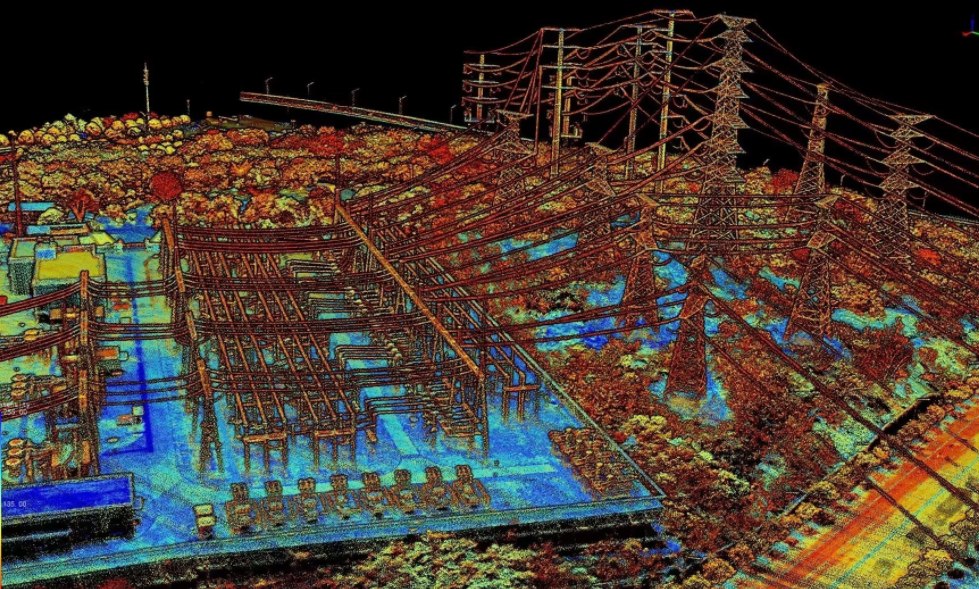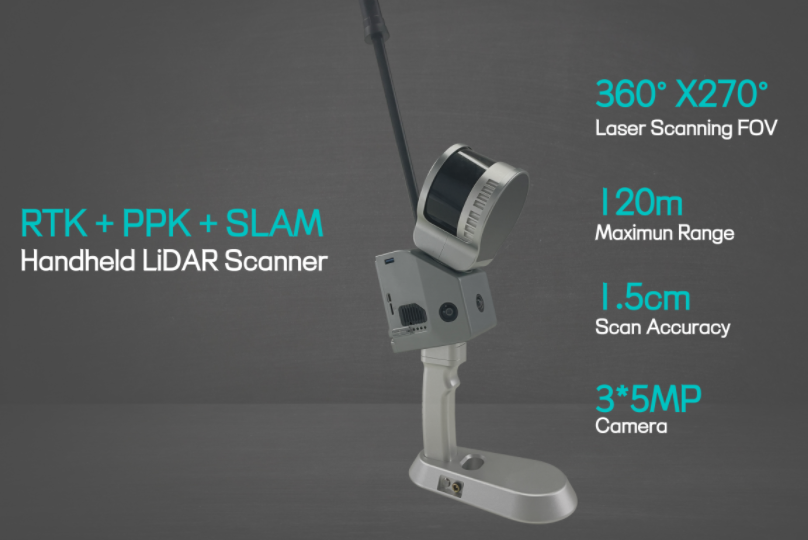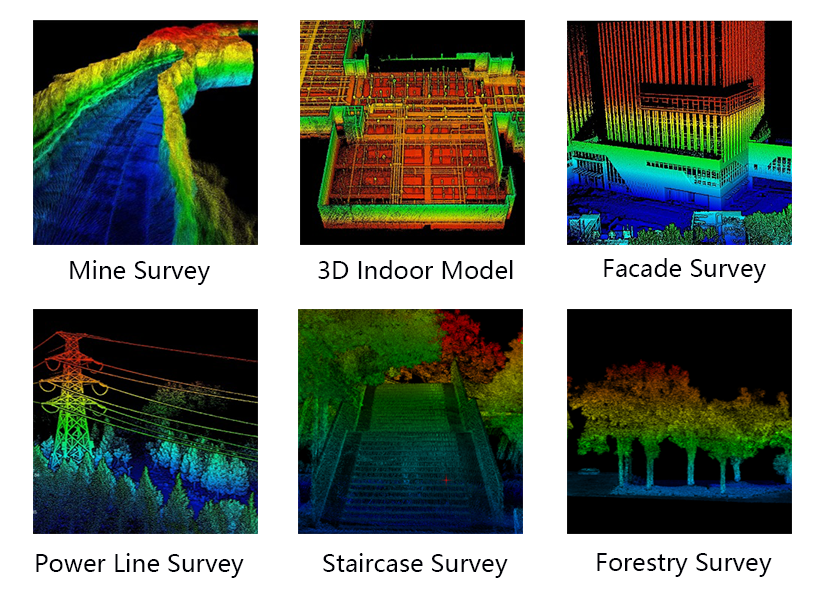
Home
Home
About Geosun
About Geosun
Products
Products
- Hardware
- Mobile LiDAR Scanning System
- gCollector Road Information Collection System
- gSpin POS System
- PPK Solution
Support
Support
News
News
Contact Us
Contact Us

In the world of surveying and mapping, everyone is familiar with LiDAR. But how much do you know about handheld LiDAR?
Handheld 3D scanners are gaining traction, expanding LiDAR's use beyond automotive and airborne applications. Their compact size and high performance are transforming 3D environment exploration and digital twins, making handheld LiDAR a "magic tool" of the digital age.

Did you know that 3D scanning applications extend far beyond industrial measurement? For example, every underground parking garage requires 3D scanning technology to capture a comprehensive view of the space during construction inspections. Similarly, 3D scanning is essential for determining construction plans and assessing structural materials for towers and building facades. Even in the preservation and restoration of cultural heritage sites, 3D scanning plays a crucial role.
The market for 3D scanning equipment is expanding rapidly due to the diverse range of applications. The swift growth of handheld 3D scanning devices is largely driven by their expanding use cases, which highlight the limitations of traditional stationary scanners that require frequent repositioning. Although vehicle-mounted and backpack-mounted devices offer some mobility, they still struggle to access tight, crowded, underground, or pipeline environments and are often quite expensive.
In scenarios such as underground space scanning, forestry surveys, landscape mapping, and outdoor modeling and measurement, handheld 3D scanning devices are increasingly popular. This trend is not only influenced by the general move towards portable equipment but fundamentally stems from the fact that handheld 3D scanners are truly unrestricted by location. They can enter nearly all types of work areas, meeting the most basic and crucial need: usability.
The growing applications for handheld 3D scanners have boosted their market potential. As interest grows, businesses and users are asking: what makes the best handheld 3D scanner? There are two main types available: handheld structured light scanners and handheld LiDAR scanners.
Structured light 3D scanners project a pattern onto the object using a stable light source and calculate the distance of each point in the field of view based on the pattern's distortion. The advantages of this method include fast scanning speed, large scanning area, and high precision. However, due to its reliance on light as the scanning medium, structured light scanners are highly sensitive to lighting conditions, making them less suitable for outdoor environments during the day.
In contrast, LiDAR operates by emitting and receiving high-frequency laser pulses, using the collected point cloud data to create 3D models and obtain information about the object's position and contours. LiDAR’s advantage lies in its minimal sensitivity to external lighting conditions, allowing it to perform well in various environmental settings while maintaining superior speed, area coverage, and precision compared to structured light scanners.
For a long time, LiDAR has held an irreplaceable role in surveying, navigation, and other fields. With its exceptional detection capabilities, LiDAR continues to expand its integration across various industries. The advent of portable handheld LiDAR has addressed the "last mile problem," significantly broadening its range of applications.
However, handheld LiDAR is not a conceptually new product. While these devices appeared on the market years ago, they, like other LiDAR products, traditionally faced trade-offs between size, performance, and cost, often excelling in only two of these areas.
Recent technological advancements and increased demand have helped to share the development costs of precision optical components in LiDAR systems. This progress has led to slimmer, more affordable LiDAR devices, and handheld LiDAR products have benefited from these overall innovations, leading to broader market applications.
As more players enter the field, including not only industrial vision equipment manufacturers but also established LiDAR specialists like Geosun Navigation—known for their extensive experience in airborne and vehicular LiDAR—the market for handheld LiDAR has become a distinct and competitive segment.

With superior performance and a compact design, handheld LiDAR is revolutionizing the exploration of real-world 3D environments and digital twins, emerging as the "magic tool" of the digital age. Take the GS-100G handheld 3D LiDAR scanner released by Geosun Navigation as an example:
A Heritage of Excellence: Geosun Navigation is a pioneer in LiDAR development, with extensive experience in navigation and surveying LiDAR systems. They have built a reputation for high-performance, quality LiDAR products and possess rich expertise in LiDAR research and development.
Exceptional Performance: The GS-100G, developed independently by Geosun Navigation, showcases their profound expertise in the field. With a scanning speed of 320,000 points per second and a 360° full-view field, the GS-100G can complete data collection and processing for a 5,000m² area in under 10 minutes. With a range of 120m and centimeter-level data accuracy, the GS-100G excels in capturing extensive, high-precision, and high-density 3D spatial information. It effectively meets the scanning and mapping needs for underground spaces, forestry surveys, landscape mapping, and outdoor modeling.

Durable and Reliable: The GS-100G features IP54 dust and water resistance, allowing it to operate in special environments like light rain, fog, and coastal areas. Even without GPS signals, its advanced high-precision SLAM algorithm ensures accurate point cloud matching and successful operations.
In today's rich landscape of real-world 3D digital twin scenarios, the future of handheld LiDAR is poised for explosive growth, similar to the past surge seen in vehicular LiDAR and airborne LiDAR markets.
While its market size may not yet rival these “predecessor” fields in the short term, the ongoing wave of digital transformation is expected to lead to boundless expansion in the applications of handheld LiDAR, with a bright future ahead.
URL:https://www.geosuntech.com/News/231.html
Previous:How SLAM Affects the Accuracy of LiDAR Scanning
Next:Choosing Between Total Station and GNSS RTK Receiver: A Comprehensive Guide




